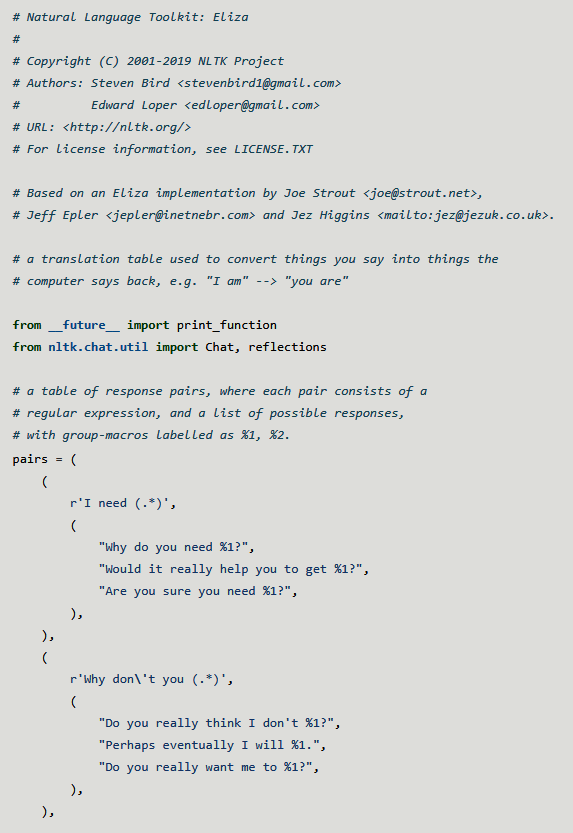The original ELIZA application was 200-odd lines of code. The Python NLTK implementation is similarly short. An excerpt is provided from NLTK's website (http://www.nltk.org/_modules/nltk/chat/eliza.html):

As you can see from the code, input text was parsed and then matched against a series of regular expressions. Once the input was matched, a randomized response (that sometimes echoed back a portion of the input) was returned. So, something such as, I need a taco would trigger a response of, Would it really help you to get a taco? Obviously, the answer is yes, and, fortunately, we have advanced to the point that technology can provide you one (bless you, TacoBot), but this was early days still. Shockingly, some people actually believed ELIZA was a real human.
But what about more advanced bots? How are they built?
Surprisingly, most chatbots you&apos...


























































